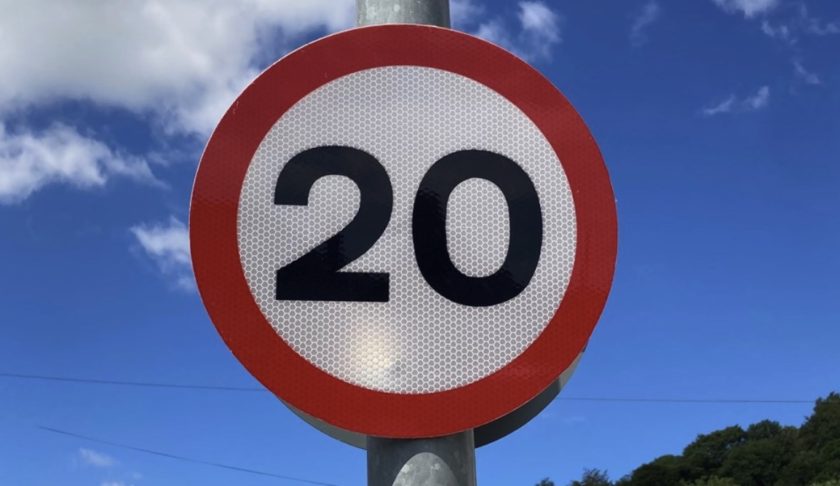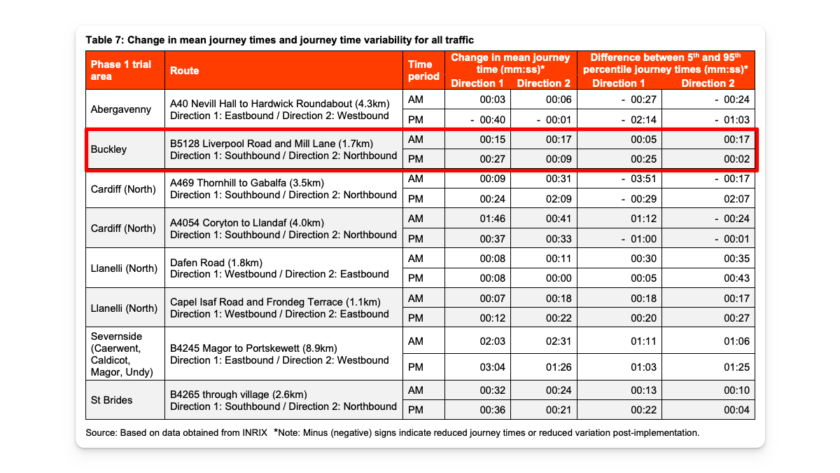New report highlights impact of 20mph speed limit trial in Buckley

The Welsh Government has published a new report today, highlighting the impact on driving speeds, walking and cycling levels, and the effects on journey times from areas in Wales trialling the new default 20mph speed limit.
The interim monitoring report, uses data gathered from the Welsh Government’s eight first-phase areas, including Buckley, and comes exactly six months before the default limit is applied across Wales.
On September 17, the Welsh Government will introduce a default 20mph speed limit on restricted roads across Wales.
Restricted roads are those where streetlights are placed no more than 200 yards apart and are usually located in residential and built-up areas with high pedestrian activity.
This move will see Wales become the first UK nation to introduce a lower speed limit, following in the footsteps of European countries such as Spain, where a 30km/h (18.5mph) limit is already in place.
In February 2022, the Welsh Government launched the pilot on unclassified roads in Buckley, Mynydd Isa, Alltami, and New Brighton as part of its plans to introduce the new national 20mph default speed limit.
However, the trial sparked a fierce backlash in Buckley, with residents claiming it has led to road rage incidents, as well as rising pollution and fuel costs.
There have been widespread calls for main arterial roads through the town to be returned to 30mph after the blanket 20mph limit was imposed.
New data
Interim Monitoring Report which uses data captured up to November 2022 has found that, on average, motorists are already driving slower in the first-phase areas, with an average speed reduction of 3mph recorded across all eight communities.
Substantial behaviour change has been observed in St Brides Major and St Dogmaels (two of the first-phase areas introduced), where the number of people driving at or below 24mph has increased from 23% to 45% and from 54% to 84% respectively.
This has clearly been seen in Buckley as well. Previously, 53% of vehicles were driving under 30mph, and now, since the trial started, that number has gone up to 81% of vehicles going below 30mph.

In the areas testing the new speed limits, they looked at the average speeds before and after the changes.
They did this in a way that doesn’t let the busiest areas control the overall numbers.
The amount of (mean) speed reduction is different in each of these testing areas.

Before the new 20mph speed limit was tested, Buckley had average speeds of at least 29mph in six-speed monitoring locations that dropped by 6.9mph following the implementation of the new speed limits, the biggest drop across all trial areas.
“Any speed reduction should be seen as a positive step towards achieving the wider well-being benefits of the default 20mph speed limit, as it reduces both the likelihood of collisions occurring and injury severity,” the report notes.
The report states that the “percentage of vehicles travelling below 30mph in Buckley has increased.”
“Previously, 53% of vehicles were travelling below 30mph; this has now increased to 81% of vehicles travelling below 30mph.”
Impact on journey times
Data reveals that along a 1.7km stretch of B5128 Liverpool Road and Mill Lane Southbound, journey times increased by 24 seconds in the afternoons, while the increase was 15 seconds during the mornings.

The report also shows that by the end of November 2022, around 257 hours of speed checks and enforcement had taken place, as well as engagement sessions.
However, zero hours of traffic speed enforcement and engagement activities had taken place in Buckley.
Buses
The effect of the new speed limit on bus schedules has been different in various places.
Some areas have seen better on-time buses, while others have seen buses running late.
Data shows that between 7am and 9am bus punctuality in Buckley dropped by 5.7% between 4pm and 6pm bus punctuality dropped to 13% following the implementation of 20mph speed limits.
The report doesn’t say that the 20mph speed limit is definitely the reason for these changes.

Active travel
Using data from Living Streets’ Wow walk to school challenge, it reported that schools in 20mph areas have seen a greater increase in active travel (walking/cycling) journeys (49% to 74%), compared to schools predominantly in 30mph areas (49% to 67%).
WOW is a pupil-led initiative where children self-report how they get to school every day using the interactive WOW Travel Tracker.
In Buckley, WOW data, which began being tracked in May 2022, suggests active travel journeys increased from 48% to 77%.
The report states: “Living Streets used survey data from the first part of the 2021-22 academic year to provide a baseline estimate for the percentage of journeys to school made by active travel.”
“Survey data showed that 49% of children in the phase 1 trial area schools and 49% of children in the control location schools either walked or cycled to school.”
There were variations between schools due to their differing locations and nature of their catchment areas.
“Over the remainder of the academic year, the proportion of journeys made by active travel increased at all schools.”
“This is due to the incentive-based nature of WOW and the improving weather.”
“However, the increase was greatest at schools within the phase 1 trial areas, with active travel use increasing from 49% of journeys to 74% of journeys to school.” This is a 51% increase in journeys.

Deputy Minister for Climate Change, with responsibility for transport, Lee Waters said:
“This latest data is already showing the benefits we can expect to see across Wales thanks to the bold move we are taking to lower the default speed limits later this year.
“Decisions like this can be unpopular and we know that change is never easy, however, evidence from around the world is clear – reducing speed limits save lives.
“We have made progress on reducing deaths and serious injuries on our roads over the 21 years of devolution, but we still need to do more to make the communities we work and live in safer.
“A reduction to 20mph on our residential and other busy pedestrian urban roads has to be the way forward.”
Joshua James, Public Affairs Manager, Living Streets Cymru added;
“Introducing 20mph as the default speed on our streets will improve the places where we live, work and go to school – and it will also save lives.
“We are pleased to be working with the Welsh Government to ensure that our streets and pavements are safe and accessible for everyone in our communities, so that more people feel encouraged to walk or cycle.”
Spotted something? Got a story? Email: [email protected]
Latest News
